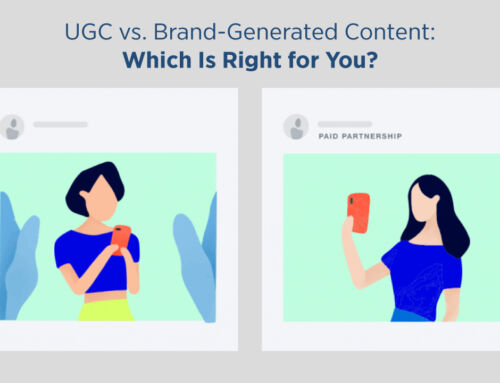Last updated on September 28, 2021
Celebrating national holidays looks and feels quite different in 2020 than in years’ past. With many Canadian cities easing quarantine restrictions and hot weather driving more people out of doors, we were interested in understanding whether alcohol consumption patterns had changed in any discernible way over the last four months of lock-down, and what implications that might have on post-pandemic consumption habits.
We learned that, while staying six feet apart and wearing maple leaf–emblazoned face masks in public may have cut into many people’s fun-making this past holiday week, some things haven’t changed: Canadians know what they’re looking for in their alcoholic beverages of choice—with 51% of Caddle users prioritizing taste over nutritional content and 76% staying true to their preferred brands.
As more public spaces open up in the months ahead, we’ll continue to monitor Canadian consumers’ celebratory habits, including their consumption of alcoholic beverages during the hazy days of summertime and beyond. But it’s safe to say, the majority of Canadian respondents enjoy a tipple from time to time, and the stresses inflicted on people due to the pandemic have only served to reinforce that behaviour for about one in five respondents.
Stay in the know on Canadian consumer habits! Sign up to receive our free, weekly summaries.
Are Canadians drinking more during the pandemic?
Across all demographics, 80% of those who drink are consuming the same amount of alcohol or more, compared to before the pandemic.

Their spirit of choice? Unequivocally, vodka is most popular among Caddle respondents, at 21%. The next most popular spirit is rum, at 11%, while whisky comes in at 8%. This ranking is consistent across all age and geographical segments, except the Greatest Generation (born 1900–45)—who prefer whisky most, followed by rum and liqueurs—and Quebeckers—who prefer rum most, followed by vodka and gin.
Vodka is also the most popular spirit (39%) among those who reported consuming more alcohol since the pandemic began.
When we look at potential differentiation based on gender, the top three (vodka, rum and whisky) remain the same for both males and females, but while women’s preferences compare positively to the general population—with vodka leading at double the rate of rum—men seem to prefer the three spirits in equal proportion. This suggests that men perhaps enjoy the deeper flavour profile of darker spirits like rum and whisky as much as the lighter flavour of clear spirits like vodka.
How brand-loyal are Canadian consumers when it comes to their alcoholic beverages?
The simple answer is “very”! More than three-quarters of respondents have stuck with their preferred alcohol brands since the start of the pandemic. This is consistent across gender and age divides, though Gen Zers seem to be more open to trying different brands, compared to other generations.

Brand image plays an important role in decision-making around alcoholic beverage purchases for a third of consumers, though an equal percentage are neutral on the subject, across the general population.
Among those panel respondents who have changed brands, 77.5% expect to continue to purchase the new brand after the pandemic.
What other major factors have affected consumer decision-making on alcoholic beverages during the pandemic?
Broadly speaking, flavour, community consciousness and availability all seem to factor into consumer interest in alcoholic beverages—especially during the pandemic—while nutritional content seems to be the least of consumers’ worries.
So, while 51% or more of Canadian alcohol consumers “never” check nutritional facts listed on alcoholic beverages (Quebeckers over-index at 52%, while Boomers come in at 60%), 61% feel that they should not have to sacrifice great taste when purchasing a low-calorie alcoholic beverage.


At the same time, 60% reported that they’re interested in purchasing alcohol from companies that provided communities with hand sanitizer during the pandemic (including major international players like AB InBev, as well as independents like Yukon Brewing, Niagara’s Dillon’s Small Batch Distillers, Smooth 42 Craft Distillery in Saskatchewan, Montreal’s Duvernois Creative Spirits and Vancouver Island’s Victoria Distillers), while a little over a third of respondents were indifferent.
And, a further 22% of alcohol consumers on the Caddle panel have been purchasing more alcoholic beverages from grocery stores, compared to pre-COVID times.
Taken together, this suggests that a reasonably sized segment of the Canadian population is open to discovering and trying new brands. And, if those brands deliver value—particularly in terms of flavour or community spirit (pun intended)—even better!
Main Takeaways
No.1 |
Vodka emerges the spirit of choice during the pandemic
Relatively flavour-neutral, and therefore easier to mix with a variety of other ingredients, vodka comes out on top as the spirit of choice among the majority of Canadian alcohol drinkers. (The fact that it also comes with fewer calories probably doesn’t hurt. See Takeaway #2, below.)
The beverage industry should continue to take this to heart and look for new ways to integrate vodka into their alcoholic drink assortment, perhaps leveraging strong brand recognition among compatible mix ingredients (e.g., soft drinks, juices, etc.) to enhance their brand image and influence purchasing decisions. Cases in point: Mark Anthony Group’s White Claw; Constellation’s Svedka Spiked Premium Seltzer; and MillerCoors’ Cape Line and Henry’s Hard Soda.
No.2 |
Canadians value taste over low-/no-cal claims
Though a significant number of alcoholic beverage manufacturers, including Molson, Labatt, and numerous craft brands, continue to launch ever-new low- or no-calorie options into the ready-to-drink (RTD) market, their efforts may in fact be better applied to introducing new and enticing flavour profiles to attract alcohol-drinking Canadians.
From a marketing perspective, they’re likely to be especially successful targeting Gen Zers, who are more open to trying new brands, especially during COVID lockdown.
No.3 |
Community spirit drives consumer interest during covid
With more than 60% of alcohol consumers expressing interest in purchasing alcohol from manufacturers who pivoted their production to hand sanitizer in the early days of the pandemic, it’s becoming abundantly clear that many Canadians, true to their international image, value community-driven initiatives.
The alcoholic beverage industry in Canada has an opportunity to further entrench the “feel good” nature of their product marketing, taking a page from such companies as Tito’s Handmade Vodka in the U.S. and Brewgooder in the U.K., by giving back to communities that most consume their products.
*Disclaimer: all data presented is owned by Caddle and has a Margin of Error of 1% or lower.
Get better business insights, faster, with Caddle.
Want more Caddle Insights? Sign up to our email list!





Leave A Comment